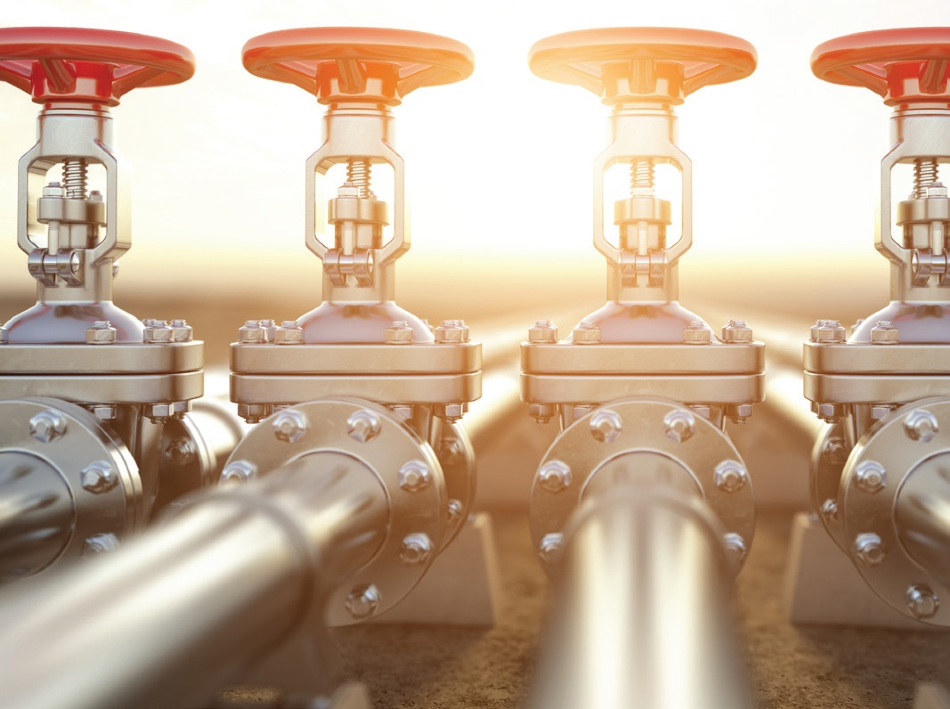Pipelines are the most economical, and the safest, means of transporting natural gas, such as methane. The US Energy Information Administration (EIA) states that almost every gas shipment in the US travels through the approximately 3 million miles of the country’s pipeline infrastructure.
A Manhattan Institute report utilizing data from the Pipeline and Hazardous Materials Safety Administration (PHMSA) highlighted that pipelines are 2.3 times safer than rail and 22 times safer than road transport when compared via the number of incidents involving injury or death, per billion ton-miles transported per year.1
Like air travel, however, the damage can be catastrophic on occasions where pipelines do fail. PHMSA data illustrates that between 2000-2019 there were 686 serious incidents on gas pipelines, resulting in 1,111 injuries and 253 deaths.2
At an average of 12 deaths and 55 injuries every year, this should not be discounted, despite being considerably lower than the rates for some other natural resource sectors, such as coal mining. These incidents also incur financial consequences that impact upon both the industry and the public.
PHMSA data shows that serious incidents on pipelines, occurring between 2005 and 2020, caused over $7.7 billion in damages. 83.3% of these costs were covered by the industry, with the public covering the other 16.7%.3
EPA also estimates that approximately 1.4% of all gas produced is lost as a result of leaks.4 In 2019, this amounted to over 471,000 mmcf8 and at the “city gate” price of $3.80/mcf this was equivalent to around $1.8 billion.
Some environmental benefits that result from shifting from coal to gas-fired power generation are negated when gas pipelines leak, because methane is a strong greenhouse gas - 21 times more potent than CO2, in fact.
Natural Gas is King, but Leaks Remain a Challenge
EIA predicts that US gas production will grow gradually through 2025 at 1.9% per year under the agency’s “reference case” scenario.5 The industrial sector – such as the gas used for process heat or as feedstock in chemical plants – is responsible for most of this growth.
Electric utilities remain the most prominent users, however, as they continue their transition from coal-fired electricity to gas-fired generation.
Exports of liquified natural gas (LNG) are expected to increase two-fold by 2030, with LNG exports to Canada and Mexico both predicted to rise. These trends are key drivers in the addition of increased pipeline capacity.
Overall, EIA has outlined that in 2019 alone, over 16 billion cubic feet per day (Bcf/d) of natural gas pipeline capacity was added to existing networks.6

Figure 1. Image Credit: ABB Measurement & Analytics
While reliance on pipelines continues to increase, gas pipeline infrastructure itself is aging. Over half of this infrastructure was constructed prior to 1970, and this is prone to leaks.
Estimates of the total amount of gas lost tend to vary, with EPA estimating this figure to be 1.4% of gas produced. However, a November 2019 study which was published in the journal Science, estimated that methane emissions from both gas and oil operations was 2.3% of annual total production.7

Figure 2. Today’s gas detection sensors can be fitted to road vehicles, aircraft or drones. Image Credit: ABB Measurement & Analytics
Regardless of the overall figure, pipelines in the US experience thousands of ruptures and leaks every year, and these can be triggered by a wide range of factors. Causes include:
- Excavating accidents that trigger the nicking, rupturing or puncturing of a pipeline
- Equipment or extremely heavy materials being placed over buried pipelines
- Water main breaks that weaken pavements or roadways
- Accumulation of too much ice or snow on gas pipes, meters and gas appliance combustion and exhaust air vents
- Explosion or fire close to a pipeline
- Too little or too much pressure in the gas system
- Corrosion or equipment failure
- Natural disasters such as tornadoes, earthquakes or floods
Finding a Needle in a Needle Stack
Before leaks can be fixed, they must be found. However, traditional methods are inaccurate, insensitive and time-consuming, often missing leaks altogether. Technicians must walk around the area currently being inspected, whilst using hand-held detectors which may take up to 45 minutes to calibrate once they are on site.

Figure 3. Using today’s mobile systems, gas technicians can cover 10-25 times as much area per hour compared to traditional technology. Image Credit: ABB Measurement & Analytics
These detection systems test the air periodically - every few seconds - with the technician moving at a slow pace through a potential leak site. Test results must be entered into reporting systems manually, while the detectors themselves frequently miss leaks due to their lack of sensitivity.
The latest advances in mobile technology, sensing and analytics have prompted a new generation of improved gas leak detection solutions that can perform considerably better than conventional methods, and at a reduced cost.
These enhanced systems are capable of detecting methane released from natural gas leaks at concentrations of 1 part per billion (ppb) or less. One such example, ABB’s mobile gas leak detection system, employs advanced GPS technology, laser-based sensors, and analytic software to significantly improve both the accuracy and speed of gas leak identification and location.

Figure 4. Modern gas detection technology covers more area in less time than conventional methods. Image Credit: ABB Measurement & Analytics
How it Works
ABB’s MobileGuard™ system is over 1,000 times more sensitive than systems that utilize traditional equipment, even possessing the ability to detect methane at up to 300 feet whilst moving at speed, for example in a car.
An onboard ultrasonic anemometer, working alongside a GPS module, is used to measure wind speed, and this, coupled with advanced analytics allows MobileGuard™ to detect, accurately locate, and precisely estimate the size of natural gas leaks; all at a rate which can cover 10-25 times more land area per hour than conventional approaches.
Crucially, the MobileGuard™ can eliminate the false positives related to biogenic sources of methane (such as animal waste or sewage) as it also detects ethane – a gas which is only found in thermogenic pipeline gas – alongside methane.
ABB’s system is cloud-connected, with data being recorded twice a second then reported and analyzed locally, while simultaneously being transferred to the cloud in real time. Electronic compliance records are created based on a map that is accessible in both the operations center and on the service team’s mobile devices.
This combination of accuracy, operational efficiency and expediency assist pipeline operators in meeting demands for rapid, transparent, accurate while increasingly streamlining operations.
Most notably, this advanced technology is commercially available and currently on the market. For example, ABB’s MobileGuard™, is currently being used across the US and around the world, up and down the natural gas value chain.
Conclusion
Developments in digitalization, sensing and analytics have enabled substantially faster, more accurate and more user-friendly methane leak detection.
It is vital that regulations and policies designed to reduce the risks of leaking methane keep pace with technological development and deployment. This will guarantee the highest level of public safety whilst simultaneously providing tangible benefits to pipeline operators.
References
- “Pipelines vs. rail transport for natural gas”, Energy Services South
- PHMSA, https://www.phmsa.dot.gov/data-and-statistics/pipeline/pipeline-incident-20-year-trends
- PHMSA, https://portal.phmsa.dot.gov/analytics/saw.dll?Portalpages&PortalPath=%2Fshared%2FPDM%20Public%20Website%2F_portal%2FSC%20Incident%20 Trend&Page=Significant%20Incidents%20 Consequences
- CNBC
- EIA demand forecast
- EIA, https://www.eia.gov/todayinenergy/detail.php?id=41933
- “Major US cities are leaking methane at twice the rate previously believed,” https://www.sciencemag.org/news/2019/07/major-us-cities-are-leaking-methane-twice-rate-previously-believed
- “Natural Gas Summary”, EIA

This information has been sourced, reviewed and adapted from materials provided by ABB Measurement & Analytics.
For more information on this source, please visit ABB Measurement & Analytics.